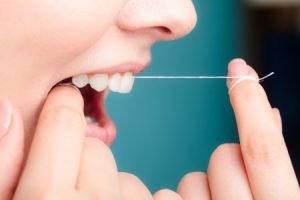 Everyone knows that dentists are concerned with flossing. It’s one of the common questions we often ask our patients during routine check-ups. But we’re not just trying to shame or humiliate you. There’s good reason—using floss is crucial to excellent oral health.
Everyone knows that dentists are concerned with flossing. It’s one of the common questions we often ask our patients during routine check-ups. But we’re not just trying to shame or humiliate you. There’s good reason—using floss is crucial to excellent oral health.
Brushing your teeth is great, and it’s the first line of defense in your oral health; however, if you neglect to floss your teeth, there’s a lot of surface area that you’re just missing. Flossing addresses all those hard-to-reach areas between teeth. Disrupting and removing the plaque and bacteria between teeth ensures better all-around protection for teeth and gums.
Additionally, if left untreated, all the buildup between teeth can lead to periodontal disease, cavities, bad breath, as well as visible staining/darkening.
It may take some time to adjust to make flossing part of your routine, but in the end, it’s worth it. With proper technique, floss can drastically improve your oral health.
How To Floss Properly
Take about 18″ of floss and wrap some of the slack around your two index fingers. Use your fingers to guide the floss between your teeth. Never force the floss down toward the gums. Instead, use a back-and-forth horizontal motion to work it in gradually. Once you’re in the proper position, the key to effective flossing is to clean just one side of one tooth at a time. Pull in the same direction from both ends, so the strand creates a “C” shape around the tooth. Gently slide up and down to remove any buildup and debris, then do the same in the opposite direction to clean the adjacent tooth. Then, move on to the next space and repeat the process. Don’t forget to floss the back of your last molar!
Keep It Everywhere
One great tip to improve your flossing is to make it convenient. Floss is relatively cheap, so stock up on several packages and store them in various areas that you frequent. Keep one in your car’s glove compartment. Keep one in your desk at work, and of course, in your bathroom(s) at home. That way, you’ll be much more likely to floss throughout the day, and if you find something stuck in your teeth, it’s much safer than using a toothpick!
